How-To: Tackle Logs
This content was originally published in issue #9 of Transmoto Dirt Bike Magazine, 2011.
Logs… they’re great for building houses, making woodchips and starting fires. But when Mother Nature decides to place a big ’un across a perfect section of trail, they can put the fear of God in the unsuspecting rider, or embarrass him in front of his mates. Even competent riders can come unstuck on logs, despite having all the basic skills necessary to clear them problem-free. Riding logs isn’t particularly difficult, but it does require you to gather a host of basic skills lurking somewhere at the back of your brain and apply them in a particular way, with a dash of confidence thrown in. EWC standout Josh Green has seen plenty of blokes falter because they don’t know how to apply the basic techniques, so we asked the talented extreme terrain rider to run through the skills needed to clear any sort of log you might encounter on the trail. Over the next few pages, Greeny explains the fundamentals, offers tips on how to practise, and an insight into the techniques the Pros use.

Whether you’re aiming to ride a piddly six-inch branch or an ancient six-foot Tasmanian hardwood, the core elements of log crossing technique remain the same. If you’re new to it, I’d recommend finding a nice, dry, even log in an open area and practicing the skills explained below until you have it down. Once you’re happy, they’ll easily translate onto the bigger slabs of timber that block your path. Even if you’re an experienced rider and can conquer most logs bulldog-style with ease, it’s worth revisiting the basics, as I’ll explain some trials techniques that will help when the terrain’s more slippery than a cake of soap after a six-pack of beer.
Vision
When out on the trail, you want to be looking as far ahead as possible, as the earlier you spot the log, the better you can set up your approach. It’s no good if you spot it at the last minute, as you’ll probably be positioned poorly, be in the wrong gear, and not have time to suss out what’s on the other side. If the log’s bigger than two feet tall or you can’t see what’s on the other side, it’s worth doing a sighting lap to check it out before attempting the crossing, as there could well be a hole or another small log on the other side. There’s no shame in doing this – even the top EWC riders do it.
Approach
The golden rule with log crossings is to hit the log as square as possible. A slight angle is okay, and I’ll cover techniques for this later, but aim to be as straight as the section of trail allows. You’re looking for good traction on the run-up, a low-spot on the log, and a smooth line on the exit so you can get moving afterwards. Gear selection is important and depends on how fast you want to attack the log. If you’re confident to hit a small log at speed and jump off it, third gear is the go. If it’s bigger, go down to second, or even first, to ensure you have enough grunt to get the job done and prevent stalling. You want the bike to be fully settled, so nothing unpredictable happens when you commit.

Commitment
Despite most blokes being afraid of commitment (well, at least to their girlfriends), you need to be absolutely sure of your ability to cross the log the moment you crack the throttle. A half-arsed attempt of a decent-sized log could well see you slam the front wheel to a halt, sending you to the hospital to have your testicles deflated, and your wheel to a wheel builder for what can be an expensive repair job. That’s why it’s so important to nail your technique on small logs before stepping up.
Body Position
Approach the log standing and in a central position, hugging the bike with your knees for stability. You want to lift the front wheel up so it comes into contact with the top half of the log, so you’ll usually be pulling a wheelie between one and two metres away. Pull back hard on the bars to get the front wheel up, then start moving your bodyweight as far back as possible. The rear wheel hitting the log will want to flip the bike forward and throw you over the bars, so get over the rear guard to counter this force. You’ll occasionally come across logs on the way out of corners, forcing you to ride them sitting down, but this isn’t ideal.
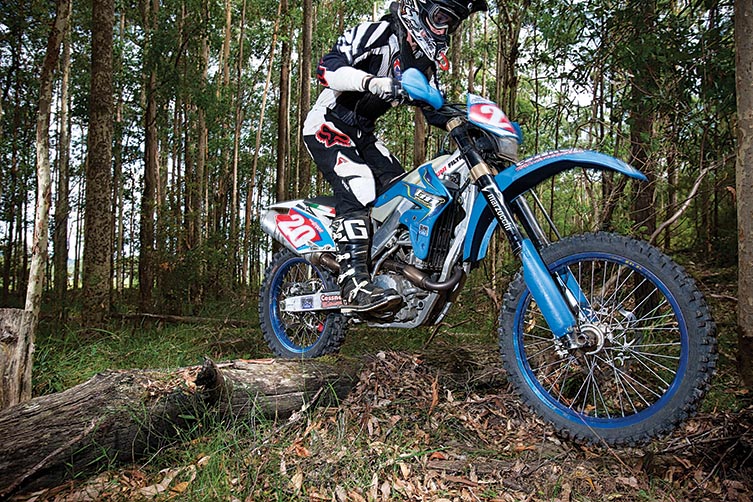
Throttle Application
Precise throttle application will get you over most logs. The first critical point is getting the front wheel up cleanly, so practice your wheelie technique if you’re not confident. Use the clutch to avoid wheelspin as it’ll keep the front wheel on the ground. The second critical point is when the rear wheel hits the log, when you need to chop the throttle and let momentum carry you over. Too much throttle here will cause wheelspin, which can flick the bike sideways.

Logs On Angles
As I said in Approach in the Fundamentals section, you want to be as square to the log as possible. Unfortunately, Mother Nature doesn’t always lay logs perpendicular to your path, so you’ll need to come up with a creative line to get square.
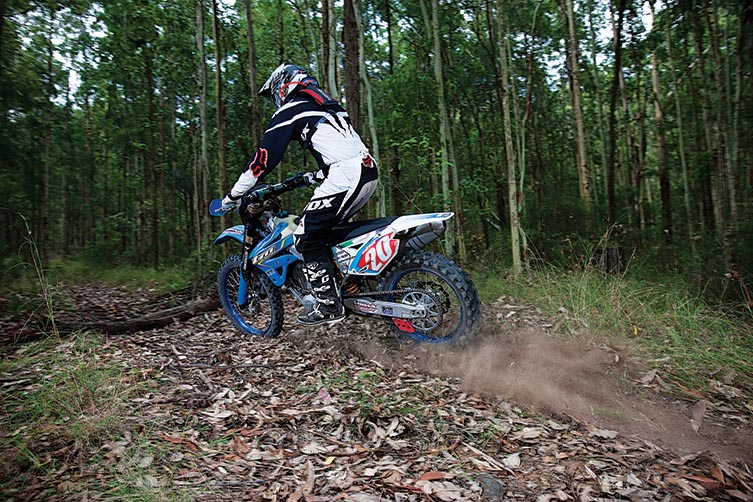
Usually the quickest way is to use the rear brake to do a skid, bringing the rear around to the angle you require, then getting on the gas to clear the log.
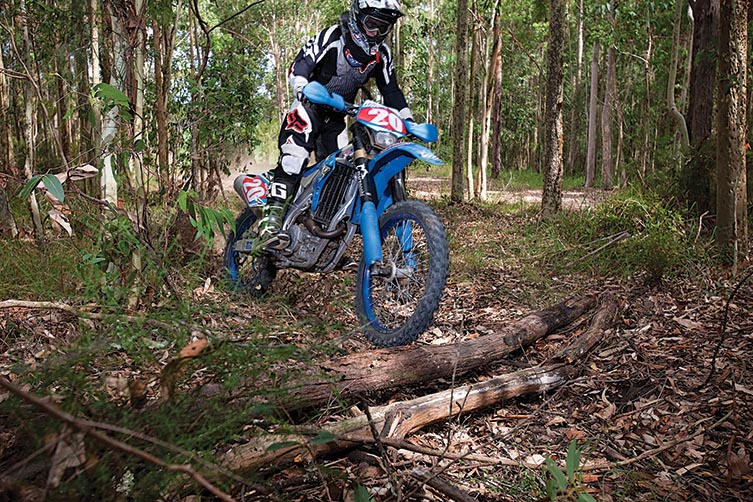
Simply pull in the clutch, apply the rear brake, and lean in the direction you want to go, while changing to an appropriate gear for the log crossing. You can control the skid to adjust your speed, using a bit of front brake if required.
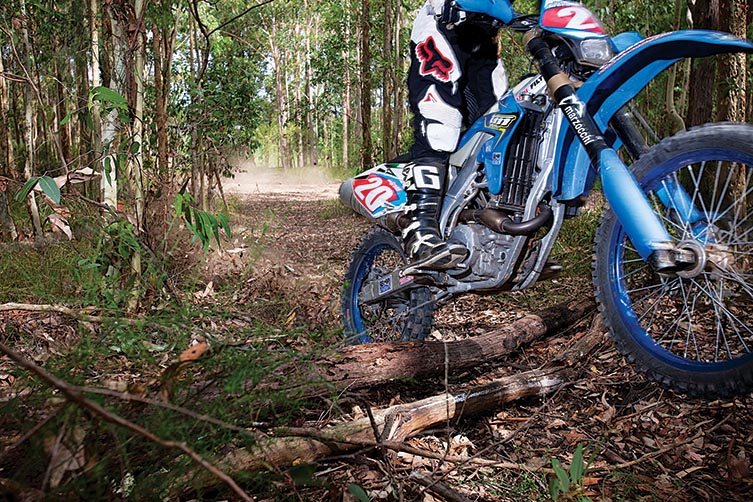
If this all sounds a bit daunting, practice your skids in an open area, trying different angles and speeds, until you are precise. As soon as you get off the rear brake, get on the gas and ride the log as you usually would, keeping your weight back to minimise wheelspin.
Full-Bore
If you’re in a hurry, it’s possible to attack small logs in third or fourth gear, even if they’re on an angle. The potential for things to go wrong is high, but the technique isn’t difficult. Approach the log in the attack position, then pull a wheelie – aiming to clear the front wheel, rather than tap it like you normally would. As the back hits, shut the throttle off to prevent wheelspin on the log.
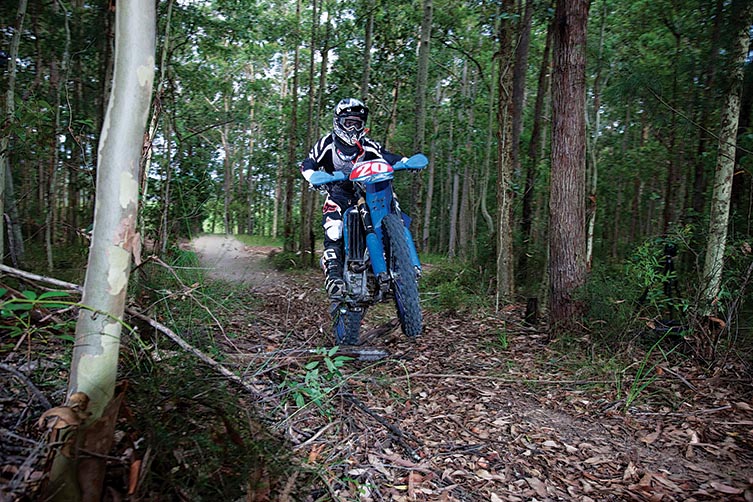
It’s important to squeeze the bike tightly, as your outside leg (the one on the side the log is pointing) is what prevents the rear of the bike kicking around. In this case, I’m squeezing the right side hard. How much you need to squeeze is something that comes with practice, as bigger and more slippery logs require a tighter grip. Be extra cautious if the log isn’t firmly planted in the ground, as a loose log is more unpredictable. Once you’re clear, get hard on the gas immediately, as this’ll stand the bike upright.

Big Log Techniques
As with small logs, you want to be fully settled on your approach to a biggie, but it’s often a good idea to pre-load the front suspension to get more lift out of the front wheel.

Then, rather than aiming to skim the log with the front wheel (as you would a small log), you want to aim lower, so the point of first contact is about two-thirds of the way up. Push hard forward on the bars to drive the front wheel into the log. As odd as this may sound, it’s done to lift the rear wheel up into the air before it contacts the log. This prevents it slamming into the log’s lower reaches and bringing you to a halt.
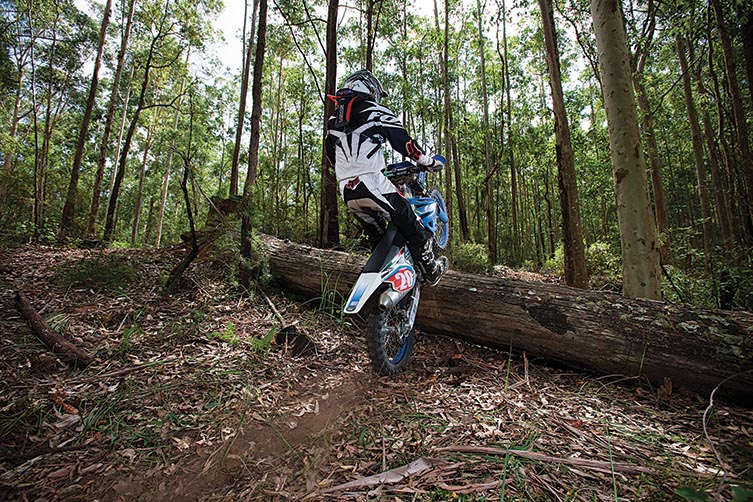
During the sequence on the left here, my rear wheel is about six inches in the air when it comes into contact with the log, allowing me to maintain momentum. Then, lean back as normal to stop the front from diving. Ideally, at least one wheel will be in contact with the ground or log at all times, but the natural motion once the back wheel contacts the log is for both wheels to be thrown up.

Pre-Jump
If there’s a solid, burnt-out old tree stump, rock or mound, you can use it as a booster to get over big logs easier and faster.

You’re usually looking for something about the same distance away from the log as where you’d usually initiate the wheelie. This makes it easier to get the front wheel up, and will provide a booster for the rear wheel, meaning you don’t have to drive the front wheel into the log as hard.

It also allows you to carry more momentum. The technique can make big log crossings much easier, and can save you time. However, it has the potential to go wrong if you hit the booster at the wrong angle or if the object moves, throwing you dangerously sideways.
Chicken Route
If a log is huge, wet, has no way around it and if your confidence has deserted you, do what mountain bikers do and stack some rocks or smaller logs to form an upramp. The technique stays mostly the same, but there’s no need to wheelie the usual one or two metres away. Instead, apply the power as your front wheel approaches the ramp and roll up and over.
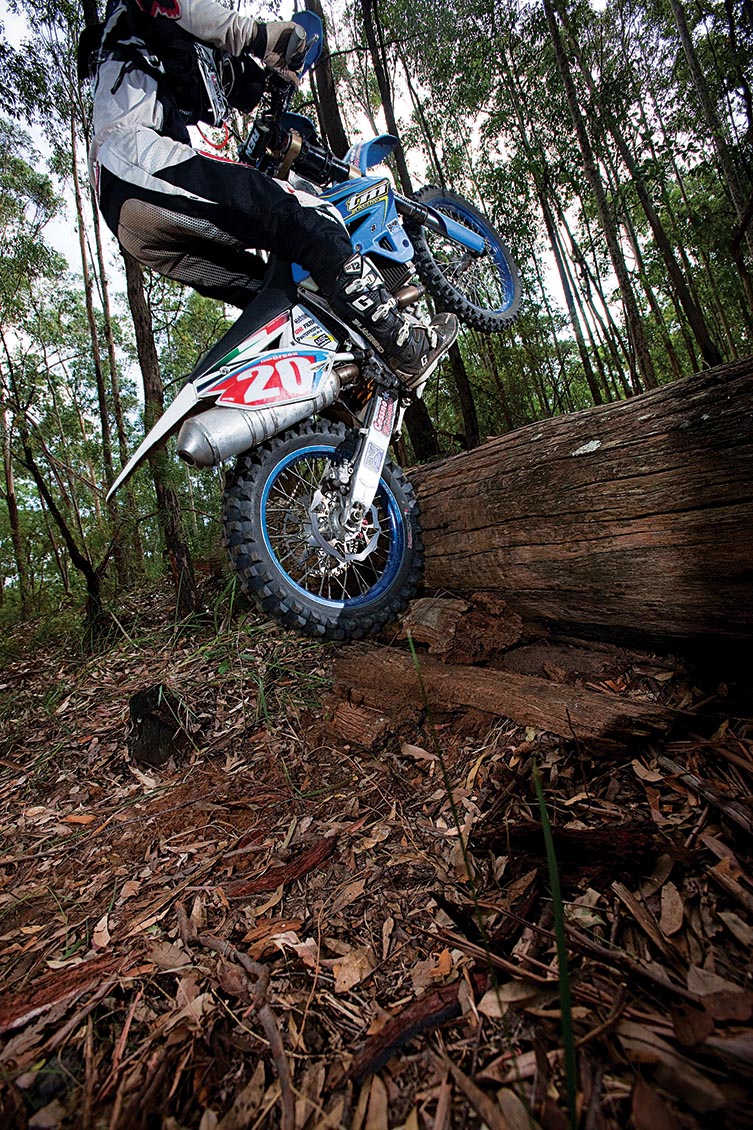
Carry enough momentum to pull you over, and avoid applying the power while the rear wheel is in contact with the log. If you’ve found the need to build an up ramp, it’s probably a good idea to make a down ramp, too; otherwise, your front may fall away and flick you over the bars.


In 2010, the then 19-year-old kid from Soldiers Point on the northern NSW coast packed his bags and headed to the UK to ride for Team TM Electraction. Winning the EWC’s Junior class in Greece, Greeny proved he could do well in Europe, where extreme terrain is commonplace. That qualifies him to dish out expert advice on how to attack logs, from pesky little branches to trail-blocking monsters.
Related Content
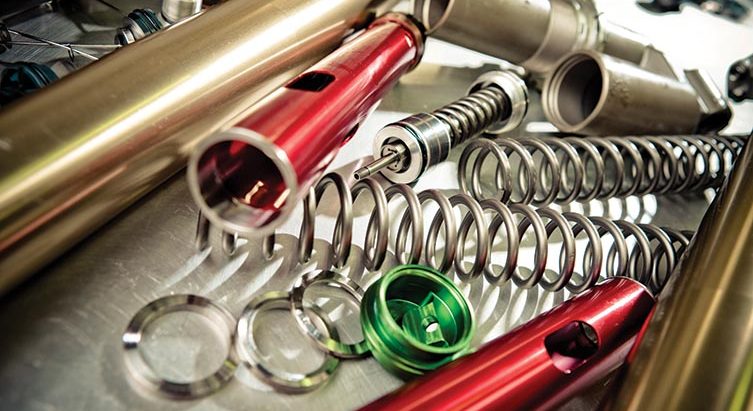
HOW-TO: BUDGET SUSPENSION SET-UP
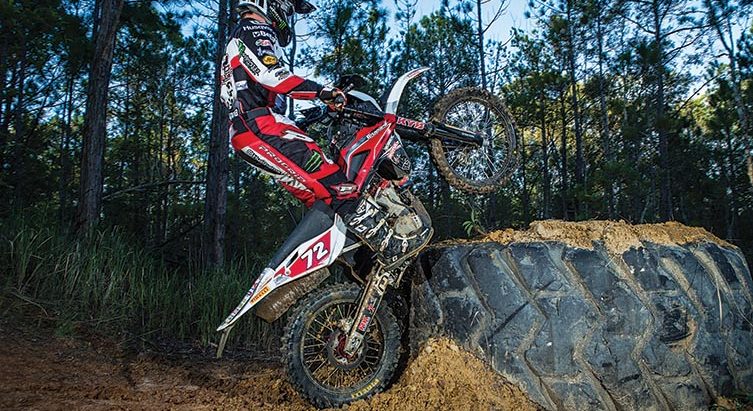
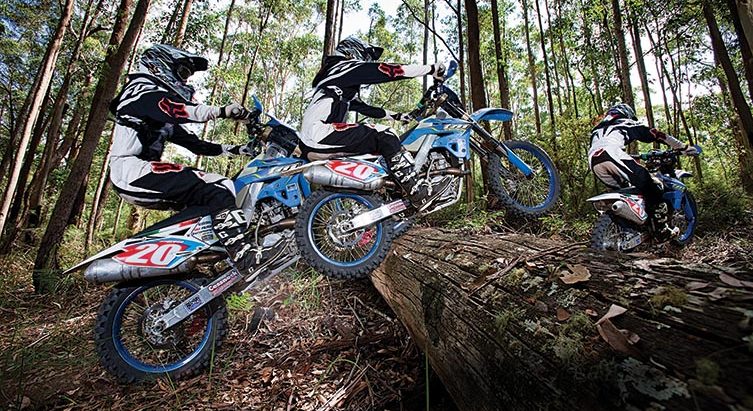









Be the first to comment...